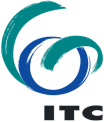Geo-health is the integration of geographic information, technologies and spatial concepts with epidemiology.
Health and disease is complex and requires a dynamic approach to understanding the drivers behind the patterns that we see. Geo-spatial technologies and GIScience play a vital role in visualizing where and when diseases occur in space and time, providing context and helping us understand why they may be prevalent, who may be affected and how to address the problem potentially.
Here at ITC, we have developed a collaborative research and learning environment that enables us to address various health and disease issues all over the world. For more information on what we have done and how geospatial technologies and data can be used for geo-health, we refer to our publications.
Projects
Research and projects in geo-health.
Education
ITC is known to be one of the top institutes worldwide in geo-information science and earth observation. At ITC, we train students to engineer approaches for designing future-oriented solutions to the world's biggest challenges. We encourage our students to participate in public-private partnership projects initiated by ITC and other organizations.
News and Events
The most recent news items and events related to geo-health of our Faculty Geo-Information Science and Earth Observation of the University of Twente.
Contact us
If you are interested in applying geo to health-related topics and collaborating with us please contact Justine Blanford. You can find her contact details below.

